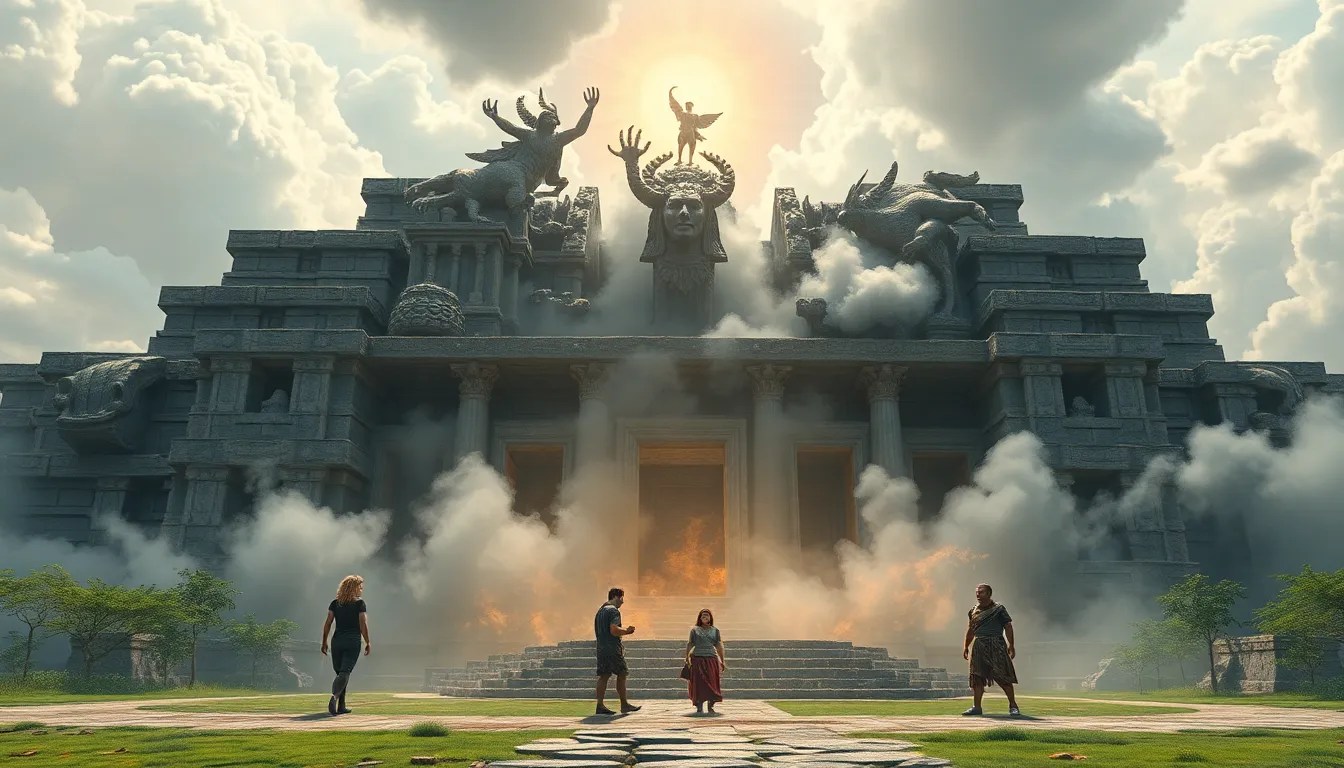The Divine Play: How the Mayans Viewed the Creation of Humanity
I. Introduction to Mayan Creation Myths
Mayan mythology is a rich tapestry of stories, beliefs, and rituals that reveal the deep spiritual and cultural values of the ancient Maya civilization. At the heart of this mythology are creation myths, which provide insight into how the Maya understood their origins and their place in the universe. These narratives not only explain the creation of the world but also lay the groundwork for the relationship between humans and the divine.
Understanding Mayan creation myths is crucial for appreciating the intricate worldview of the Maya, as these stories encapsulate their beliefs about life, death, and the continuous cycle of existence.
II. The Concept of Teotl: Divine Forces in Creation
Central to Mayan cosmology is the concept of Teotl, which refers to the divine forces or energies that permeate the universe. Teotl is often understood as a dynamic and sacred essence that manifests in various forms, including gods, nature, and human existence. This divine force is not static; it is in constant motion, influencing the world and its inhabitants.
The interaction between Teotl and the creation of humanity is profound. The gods channel Teotl to shape existence, and through their actions, they bring forth life. Humanity, in this context, is seen as an integral part of the cosmic order, created through divine will and intention.
III. The Popol Vuh: The Sacred Text of Creation
The Popol Vuh, often referred to as the “Book of the People,” is the most significant sacred text of the Maya. Written in the 16th century, it serves as a crucial source of knowledge about Mayan mythology, history, and culture. The Popol Vuh recounts the creation of the world, the adventures of the Hero Twins, and the various attempts by the gods to create humanity.
Within the Popol Vuh, several key narratives detail human creation, illustrating the complexity and depth of Mayan beliefs. These stories highlight the relationship between humans and the gods, showcasing the interplay of divine intentions and human agency.
IV. The Role of the Gods in Humanity’s Creation
The creation of humanity involves several key deities, most notably Tepeu and Gucumatz (also known as Kukulkan). Tepeu represents the creative force, while Gucumatz embodies the wisdom and knowledge necessary for creation. Together, they consult and deliberate on how to create beings that can worship and honor them.
- Tepeu: The god of creation who embodies the creative energy of the universe.
- Gucumatz: The feathered serpent god associated with wisdom and the earth.
Throughout the creation process, the gods face numerous trials and tribulations. Their initial attempts to create humanity are met with failure, leading to a deeper understanding of what it means to be human and the qualities necessary for true worship.
V. The Significance of Corn in Human Creation
In Mayan culture, corn (maize) is more than just a staple food; it is a sacred symbol of life and sustenance. The mythological narrative surrounding the creation of humans from corn underscores its significance in Mayan society. The gods ultimately decide to create humans from maize dough, as corn embodies the essence of life and the connection to the earth.
This act reflects the belief that humans are intrinsically linked to the land and the natural world, highlighting the importance of agriculture in sustaining life and culture.
VI. The Three Attempts at Creating Humanity
The gods’ journey to create humanity is marked by three distinct attempts, each illustrating the challenges of creation and the evolving understanding of what it means to be human.
- First Attempt: The gods create humans from mud, but these beings are weak and fall apart, lacking the strength and spirit necessary for life.
- Second Attempt: The gods try again, this time using wood to create a more resilient being. However, these wooden figures lack emotion and consciousness, rendering them soulless and unable to worship the gods.
- Third Attempt: Finally, the gods create humans from corn, resulting in beings who possess intelligence, emotion, and the ability to honor the divine.
Each failed attempt serves as a lesson for the gods, emphasizing the importance of understanding the essence of humanity and the qualities necessary for a meaningful existence.
VII. Humanity’s Purpose and the Mayan Cosmology
In the Mayan worldview, humanity holds a unique and sacred purpose. Humans are seen as caretakers of the earth, responsible for maintaining the balance between the divine and the natural world. This relationship is reciprocal; humans offer prayers, rituals, and offerings to the gods in exchange for blessings and sustenance.
The Mayan cosmology emphasizes the interconnectedness of all beings, where humans, nature, and the divine coexist in a harmonious cycle. This perspective fosters a deep respect for the environment and the divine forces that govern existence.
VIII. Conclusion: The Legacy of Mayan Creation Myths
The Mayan creation myths have left an enduring legacy that continues to resonate in modern culture. These stories not only provide insight into the ancient Maya’s beliefs and values but also invite reflection on the universal themes of origin, existence, and the relationship between humanity and the divine.
Understanding these creation stories is vital for appreciating the richness of Mayan culture and the wisdom embedded in their mythology. As we explore the divine play of creation, we uncover the timeless messages that echo through the ages, reminding us of our interconnectedness with the world around us.



